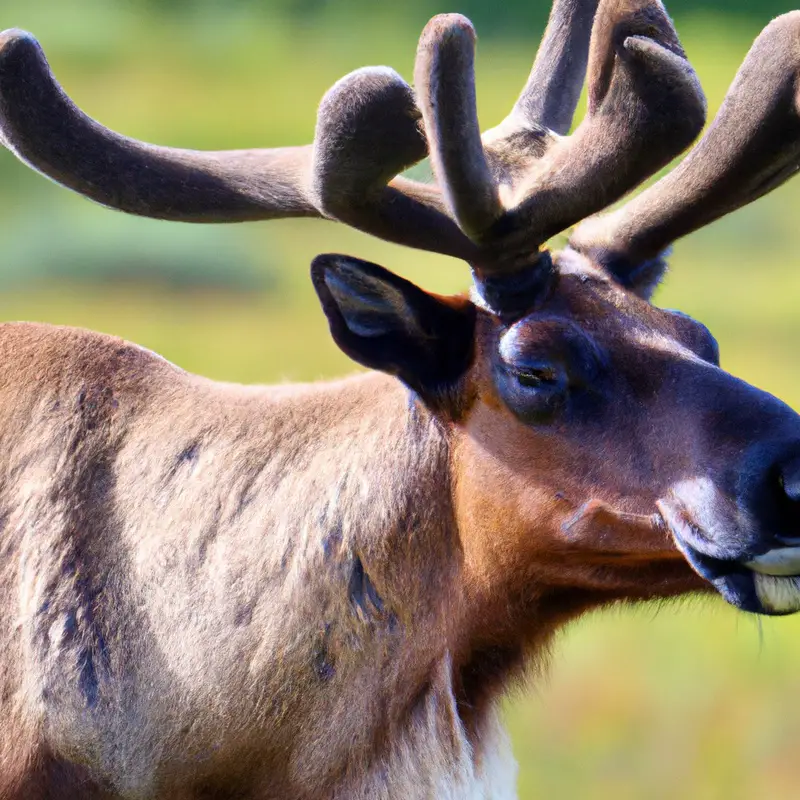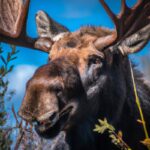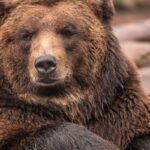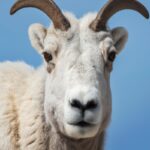Key Takeaways:
- Caribou hunting in Alaska requires a specific set of skills and strategies.
- Alaskan caribou populations are an important resource for sustenance and cultural practices.
- Hunting regulations and practices aim to maintain sustainable caribou populations.
- Successful caribou hunting in Alaska requires knowledge of the landscape and wildlife behavior.
Imagine standing alone in the vast wilderness of Alaska, with nothing but the crisp mountain air and the thrill of the hunt filling your senses. Are you ready for the adventure of a lifetime?
Well, if you’re looking for an adrenaline-pumping pursuit in the Last Frontier, it’s time to consider hunting caribou.
With their majestic antlers and elusive nature, caribou offer a challenging and exhilarating experience for hunters. In this article, I will share my expertise on understanding caribou, planning your hunt, finding the best hunting spots, techniques and strategies, ethical practices, field dressing and processing, valuable tips from experienced hunters, and the hunting regulations specific to Alaska.
So, grab your gear and let’s embark on an unforgettable journey into the untamed Alaskan wilderness.
Aspect | Benefits | Challenges |
|---|---|---|
Abundance of Caribou | Ample opportunities for hunting | Increased competition among hunters |
Wilderness Experience | Opportunity to explore remote and beautiful landscapes | Requires physical fitness and outdoor survival skills |
Quality of Meat | Lean and nutritious | May require careful field dressing and processing |
Trophy Potential | Potential for obtaining impressive antler specimens | Can be challenging to stalk and take down a trophy-worthy caribou |
Regulations and Licensing | Strict regulations to ensure sustainable hunting practices | Cost of licenses and permits |
Understanding Caribou
Characteristics and behavior of caribou
Caribou, also known as reindeer, are incredibly adaptable and fascinating creatures.
They have several unique characteristics and behaviors that set them apart from other animals.
One of the most remarkable features of caribou is their ability to migrate long distances, traveling hundreds of miles each year in search of food and suitable habitats.
They have large, concave hooves that help them navigate through snow and ice, making them well-equipped for their nomadic lifestyle.
Another interesting behavior of caribou is their tendency to form large herds, sometimes consisting of thousands of individuals.
These herds provide protection from predators and allow for more efficient foraging.
Caribou are highly social animals and use vocalizations, such as grunts and snorts, as a means of communication within the herd.
During the mating season, known as the rut, male caribou grow impressive antlers that are used for dominance displays and attracting females.
The antlers are shed after mating, and the cycle repeats every year.
Caribou are also known for their excellent sense of smell, which they use to detect predators and navigate their surroundings.
In terms of diet, caribou are herbivores, primarily feeding on lichens, grasses, and shrubs.
They have a specialized digestive system that allows them to extract maximum nutrients from their food sources, enabling them to survive in harsh, arctic environments.
Overall, the characteristics and behavior of caribou demonstrate their remarkable adaptability and resilience in challenging conditions.
Their ability to migrate, form herds, and survive on a diverse diet are all strategies that have allowed them to thrive in their natural habitats for thousands of years.
Types of caribou found in Alaska
Alaska is home to three main types of caribou: the barren-ground caribou, the woodland caribou, and the Porcupine caribou.
- The barren-ground caribou is the most numerous and well-known type found in Alaska. They are highly adapted to the tundra and migrate in large herds across vast distances.
- Woodland caribou are found in the southeastern part of Alaska, primarily in the boreal forests. They are known for their large antlers and prefer dense vegetation.
- The Porcupine caribou, named after the Porcupine River, have a unique migration pattern that takes them through the Arctic National Wildlife Refuge in northeast Alaska.
Each type of caribou has its own ecological niche and distinctive characteristics, making Alaska a diverse and fascinating habitat for these magnificent creatures.
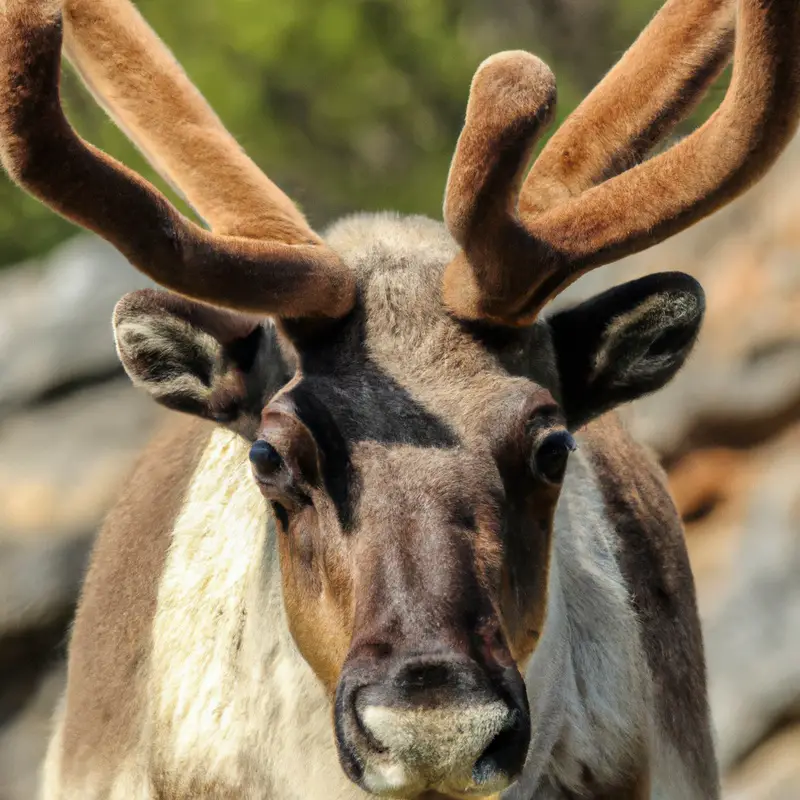
Planning Your Caribou Hunt
Choosing the right hunting season
Choosing the right hunting season is essential for a successful caribou hunt in Alaska. Here are a few factors to consider:
- Migration patterns: Caribou migrate based on the availability of food and weather conditions. Research their seasonal movement patterns to locate the best hunting areas.
- Weather: Extreme weather conditions can make hunting difficult and dangerous. Consider the weather during different seasons, and choose a season with more favorable conditions.
- Hunting regulations: Familiarize yourself with the hunting regulations and seasons set by the Alaska Department of Fish and Game. Make sure you choose a season that aligns with the regulations and permits you have.
- Personal preferences: Consider your preferences, such as hunting in colder or warmer weather, or during peak rutting periods. This will help you choose a season that suits your hunting style and preferences.
By taking these factors into account, you can make an informed decision and choose the right hunting season for your caribou hunt in Alaska.
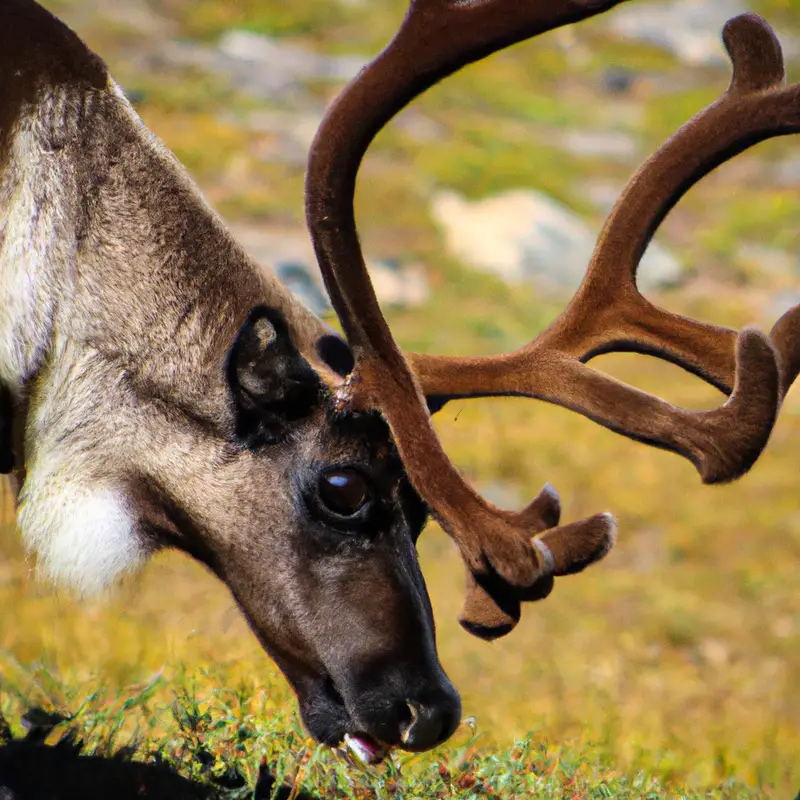
Obtaining necessary permits and licenses
Obtaining necessary permits and licenses is an important step before hunting caribou in Alaska. To ensure compliance with regulations, you must obtain a hunting license from the Alaska Department of Fish and Game.
Additionally, you may need a specific permit for caribou hunting, which may depend on the region you plan to hunt in.
It’s crucial to research and understand the regulations specific to the area you intend to hunt. Contact the Department of Fish and Game or visit their website for the most up-to-date information on permits and licenses required for hunting caribou in Alaska.

Selecting appropriate hunting gear and equipment
When it comes to selecting appropriate hunting gear and equipment for a caribou hunt in Alaska, there are a few key items you’ll want to consider. First, you’ll need a reliable rifle or bow that meets the state’s hunting regulations.
Second, a quality pair of waterproof and insulated boots is essential for navigating the Alaskan terrain.
Third, don’t forget about clothing layers that can be easily adjusted to accommodate changing weather conditions. Additionally, binoculars, a reliable knife, and a sturdy backpack are all important gear items to have on hand.
Remember to check regulations and consult experienced hunters for specific recommendations before making your selections.
Finding the Best Hunting Spots
Researching caribou migration patterns
To research caribou migration patterns, start by gathering information from wildlife biologists and local hunting organizations.
They often have valuable data and insights about caribou movements.
Additionally, online sources such as wildlife management websites and research papers can provide detailed information on migration routes and timing.
Studying satellite imagery and topographic maps can also help identify key migration corridors and feeding grounds.
Remember to stay up-to-date with the latest research and observations and consider talking to experienced hunters in the area for firsthand knowledge.
Exploring popular hunting areas in Alaska
If you’re looking for popular hunting areas in Alaska, there are a few that stand out. One option is the Denali National Park and Preserve, which offers opportunities for big game hunting, including moose and caribou.
Another popular spot is the Kodiak Island, known for its impressive brown bear population.
Additionally, areas such as the Chugach Mountains and the Alaska Peninsula are known for their diverse game species. Just remember to research and obtain the necessary permits and licenses before heading out.
Happy hunting!
Considering hiring a guide or outfitter
Considering hiring a guide or outfitter for your hunting trip can greatly enhance your experience and increase your chances of success.
A skilled guide or outfitter will have extensive knowledge of the area, know where to find the best game, and provide you with valuable tips and techniques.
They can also ensure your safety and assist with logistics such as transportation and accommodations.
Before hiring, research reputable guides or outfitters, read reviews, and ask for recommendations from fellow hunters.
Be sure to discuss any specific expectations or requirements with potential guides to ensure a great hunting experience.
Techniques and Strategies for Hunting Caribou
Understanding spot and stalk hunting method
Spot and stalk hunting is a popular method used by hunters to pursue caribou in Alaska.
It involves spotting the animal from a distance and then slowly stalking it on foot.
The goal is to get close enough for a successful shot.
This method requires patience, stealth, and a good understanding of the animal’s behavior and habitat.
It’s important to move slowly, stay downwind, and use natural cover to remain undetected.
Spot and stalk hunting can be a thrilling and rewarding experience for those willing to put in the effort.
Utilizing calling techniques for caribou
When it comes to hunting caribou, utilizing calling techniques can greatly improve your chances of success. Here are a few tips for using calling techniques effectively:
- Mimic caribou sounds: Learn to imitate the various calls of caribou, such as cow calls, bull grunts, and calf distress sounds. Practice your mimicry skills to make your calls sound as authentic as possible.
- Use the right call at the right time: Pay attention to the behavior and vocalizations of caribou during different seasons and situations. For example, during the rut, using bull grunts can attract dominant males, while cow calls are effective for drawing in females.
- Be patient and persistent: Calling caribou requires patience and perseverance. Set up in an area known for caribou activity and give your calls time to reach their target. Be prepared to wait for extended periods, as caribou may take their time to approach.
- Practice calling techniques in advance: Before heading out for a hunting trip, practice your calling techniques in different scenarios. Familiarize yourself with the specific calls that will be effective for the caribou species you are targeting.
Remember, each hunting situation is unique, and it may take some trial and error to find the calling techniques that work best for the caribou in your area. By remaining adaptable and continually refining your skills, you can increase your chances of a successful hunt.
Tips for successful tracking and stalking
When it comes to tracking and stalking caribou successfully, there are a few tips you should keep in mind.
Firstly, always pay attention to the wind direction.
Caribou have a strong sense of smell, so it’s crucial to stay downwind of your target.
Secondly, move slowly and quietly.
Caribou are alert animals and can be easily spooked by sudden movements or loud noises.
Thirdly, study the behavior and habits of caribou beforehand.
This will give you insights into their patterns, allowing you to anticipate their movements and plan your approach accordingly.
Lastly, use natural cover and terrain to your advantage, staying hidden and blending in with your surroundings.
By implementing these strategies, you increase your chances of a successful hunt.
Ethical Hunting Practices and Safety Measures
Ensuring safety during the hunting expedition
During a hunting expedition, safety should always be your top priority. Here are some key measures to ensure a safe experience:
- Familiarize yourself with local hunting regulations and laws. This will help you understand the permissible hunting methods, seasons, bag limits, and safety requirements specific to the area you’re in.
- Always inform someone about your hunting plans. Share details such as your location, estimated return time, and emergency contacts. This way, if anything goes wrong, help can be sent your way.
- Invest in appropriate hunting gear and equipment, including high-visibility clothing, sturdy boots, and a reliable firearm. Ensure that your equipment is in good working condition before heading out.
- Practice firearms safety by treating every firearm as if it is loaded. Always point the barrel in a safe direction, keep your finger off the trigger until you’re ready to shoot, and be aware of your target and what’s beyond it.
- Be familiar with the terrain and weather conditions. Watch out for unstable ground, steep slopes, and potential hazards like fallen trees or hidden crevices. Stay updated on weather forecasts and be prepared for sudden changes.
- Carry essential safety items, including a first aid kit, navigation tools, extra food and water, and a reliable means of communication like a mobile phone or satellite device.
- Hunt with a partner whenever possible. Having a hunting buddy adds an extra layer of safety and support. Look out for each other, communicate clearly, and maintain constant awareness of your surroundings.
- Stay mentally and physically prepared. Hunting can be challenging, so make sure you are in good health and have the stamina to handle the demands of the expedition. Remember to take breaks, stay hydrated, and avoid pushing yourself beyond your limits.
Understanding the impact of hunting on caribou populations
Hunting can have a significant impact on caribou populations.
Overhunting can lead to a decline in their numbers and disrupt their natural behavior.
It is essential to have regulations in place to ensure sustainable hunting practices.
These regulations should include strict quotas on the number of caribou that can be harvested, as well as limits on the hunting season.
By balancing the needs of hunters with the conservation of caribou populations, we can help maintain a healthy and thriving ecosystem.
Field Dressing and Processing Caribou
Step-by-step guide to field dressing a caribou
Alright! Here’s a step-by-step guide to field dressing a caribou:
- Start by positioning the caribou on its back and securing its legs.
- Use a sharp knife to make an incision from the base of the sternum down to the pelvic bone.
- Carefully separate the skin and hide from the body by cutting through the connective tissues.
- Remove the internal organs, starting with the intestines, liver, and kidneys. Be cautious not to puncture any organs.
- Cut around the anus and carefully remove it, ensuring to avoid any contamination.
- Clean the body cavity thoroughly by removing any remaining blood, dirt, or debris.
- Rinse the body cavity with cold water and pat dry to ensure cleanliness.
- Hang the caribou carcass in a cool, well-ventilated area to age if desired.
Remember to always practice field dressing techniques safely and responsibly. Happy hunting!
Proper care and storage of caribou meat
Proper care and storage of caribou meat is essential to ensure its freshness and taste.
Here are some tips to help you with this process:
- Field dressing: After harvesting the caribou, it is crucial to field dress it promptly to remove the internal organs. This helps prevent the meat from spoiling and reduces the risk of contamination.
- Cooling: Cooling the meat as quickly as possible is vital. You can do this by hanging the carcass in a shaded area or using ice packs or coolers to chill the meat. Keeping it cool slows down bacterial growth and preserves the quality.
- Butchering and packaging: Once the caribou is field dressed and cooled, you can proceed with butchering the meat into manageable portions. Properly wrap and package them, ensuring they are airtight to prevent freezer burn.
- Freezing: If you plan to store the meat for an extended period, freezing is the best option. Make sure your freezer maintains a temperature of 0°F (-18°C or below for optimal preservation.
- Labeling and rotation: Label each package with the date it was frozen to help you keep track of its freshness. Make it a practice to use the oldest packages first to avoid any potential loss of quality.
By implementing these steps, you can ensure the proper care and storage of caribou meat, allowing you to enjoy its delicious flavor for months to come.
Exploring various recipes and cooking methods
Let’s dive into the exciting world of exploring different recipes and cooking methods for your caribou meat.
Here are some delicious ideas to get you started:
- Grilling: Marinate caribou steaks or kabobs in your favorite combination of spices, herbs, and sauces. Then, fire up the grill and cook to perfection. Don’t forget to let the meat rest for a few minutes before serving to keep it juicy.
- Slow cooking: Tenderize tougher cuts of caribou meat by slow cooking it in a crockpot or Dutch oven. Add vegetables, broth, and herbs for a flavorful stew or use the meat for pulled caribou sandwiches.
- Roasting: Create a mouthwatering roast by seasoning a whole caribou leg or shoulder with your preferred herbs and spices. Cook it low and slow in the oven until it reaches the desired doneness.
- Soups and stews: Utilize caribou meat in hearty soups and stews. Combine it with vegetables, beans, and aromatic ingredients to develop rich flavors.
- Sausages and ground meat: Ground caribou meat can be used in various ways. Make your own caribou sausages or use it as a base for burgers, meatballs, or chili.
Remember, the key to enjoying a tender and flavorful caribou dish is to properly season and cook the meat.
Experiment with different combinations of herbs, spices, and cooking methods to find your favorite recipe.
Happy cooking!
Hunting Tips and Tricks from Experienced Hunters
Advice on maximizing your chances of success
If you want to maximize your chances of success while hunting, here are a few tips to keep in mind:
- Scout the area beforehand: Take the time to familiarize yourself with the hunting area, learn the behavior patterns of the game you’re after, and identify potential feeding and bedding areas.
- Use camouflage and scent control: Blend into your surroundings with proper camouflage gear and minimize your scent to avoid alerting the animals.
- Hunt during the right time: Research the best time of day, season, and weather conditions for hunting your target animal. This can greatly increase your chances of encountering them.
- Practice your shooting skills: Regularly practice your shooting skills to ensure accuracy and precision when the moment of truth arrives.
- Be patient and persistent: Hunting requires patience. Don’t give up easily, and be willing to put in the time and effort necessary to achieve success.
Common mistakes to avoid while hunting caribou
One common mistake to avoid while hunting caribou is not being prepared. Make sure you have all the necessary equipment, such as a good quality rifle or bow and appropriate ammunition.
Another mistake is not knowing the hunting regulations and seasons.
Always check the regulations set by the local wildlife agency before heading out. Additionally, not scouting the area beforehand can lead to wasted time and missed opportunities.
Familiarize yourself with the caribou’s habits and terrain to increase your chances of success.
Finally, being too impatient or making too much noise can scare away the caribou. Practice patience and stay quiet while hunting.
Learning from personal experiences of seasoned hunters
Experienced hunters have a wealth of knowledge gained from their personal hunting experiences.
Learning from these seasoned hunters can be incredibly valuable.
You can gain insights into tracking techniques, understanding animal behavior, selecting the right gear, and making ethical hunting decisions.
Additionally, they can share tips on scouting locations, identifying food sources, and practicing patience.
Listening to their stories and advice will help you become a more skilled and responsible hunter.
So, don’t hesitate to reach out to experienced hunters and learn from their personal experiences.
Caribou Hunting Regulations in Alaska
Overview of state hunting regulations and restrictions
State hunting regulations and restrictions in Alaska are put in place to maintain sustainable wildlife populations and ensure responsible hunting practices.
These regulations cover various aspects, such as seasons, bag limits, and licensing requirements.
For caribou hunting, specific rules may apply, including permit requirements, designated hunting areas, and harvest reporting.
It is essential to familiarize yourself with these regulations and stay updated on any changes to ensure compliance and contribute to the conservation efforts.
Always prioritize safety, ethical hunting practices, and respect for the environment when pursuing your hunting adventures in Alaska.
Important guidelines for responsible hunting practices
When hunting caribou in Alaska, there are important guidelines you should follow to ensure responsible hunting practices.
These guidelines include:
- Know and follow hunting regulations: Familiarize yourself with the specific regulations set by the Alaska Department of Fish and Game. These regulations help protect the caribou population and maintain a sustainable hunting environment.
- Practice ethical hunting: This means taking only the necessary shots and avoiding unnecessary harm to wildlife. Aim for clean and humane kills, and avoid shooting beyond your effective range.
- Respect the land and wildlife: Treat the environment with respect and leave it as you found it. Avoid littering, minimize disturbance to the habitat, and respect other hunters and their areas.
- Be prepared and skilled: Ensure that you have the necessary skills and equipment before heading out to hunt. This includes knowledge of field dressing and proper meat handling techniques.
Understanding bag limits and reporting requirements
Understanding bag limits and reporting requirements is essential when hunting caribou in Alaska. Bag limits refer to the number of caribou you are allowed to harvest during a hunting season.
It is important to know and adhere to these limits to ensure sustainable hunting practices and conservation.
Reporting requirements, on the other hand, involve documenting and reporting your hunting activity to the appropriate authorities. These reports help monitor and manage wildlife populations.
Make sure to familiarize yourself with the specific bag limits and reporting requirements set by the Alaska Department of Fish and Game before embarking on your hunting adventure.
Final Verdict
Hunting caribou in Alaska offers an exhilarating and rewarding experience for outdoor enthusiasts. By understanding caribou behavior, planning carefully, and utilizing effective hunting strategies, hunters can increase their chances of success.
It is crucial to prioritize ethical hunting practices, respect hunting regulations, and ensure safety during the expedition.
Proper field dressing and processing of caribou meat is essential for preserving its quality. By following these guidelines and learning from seasoned hunters, one can embark on a thrilling and responsible caribou hunting adventure in the breathtaking wilderness of Alaska.
